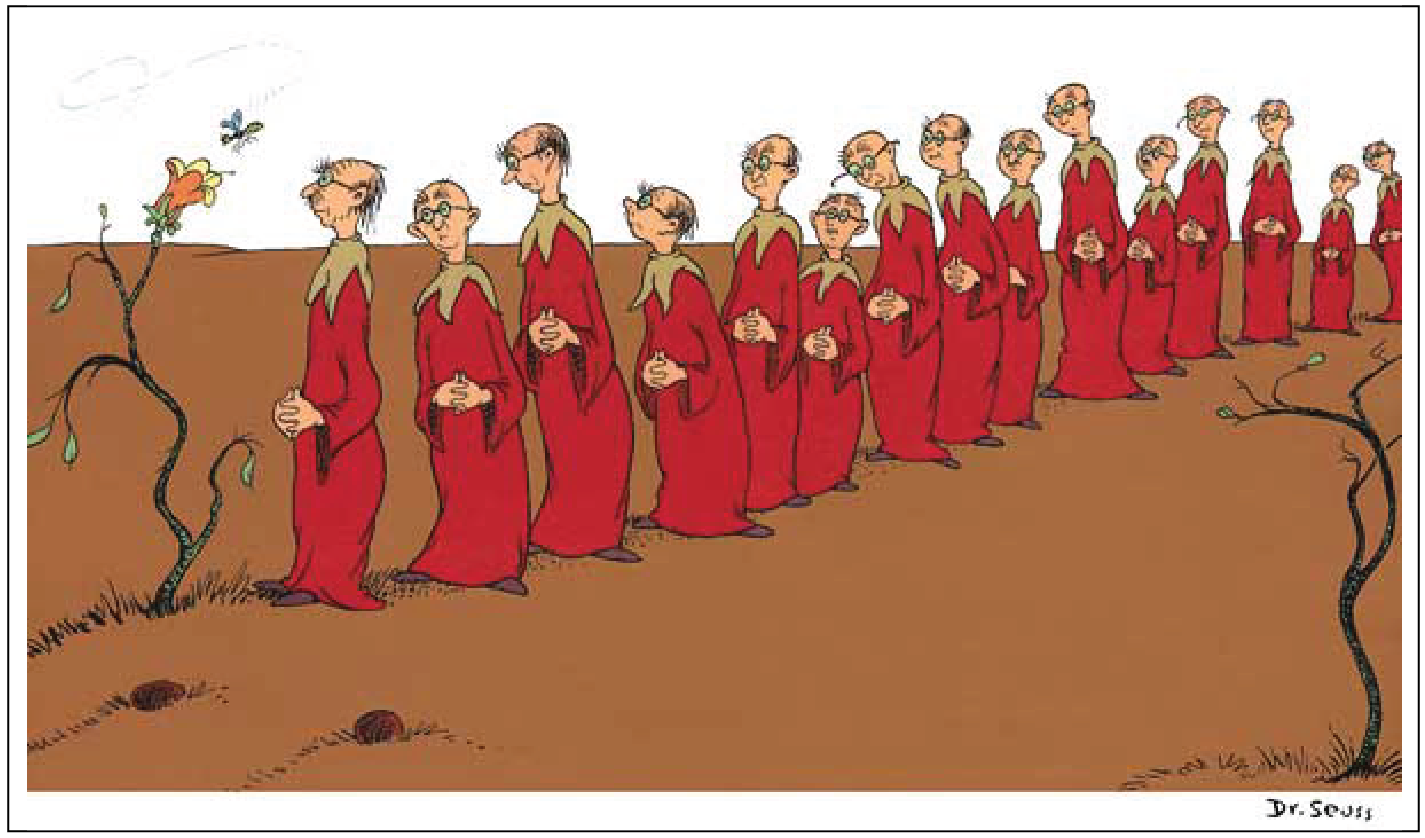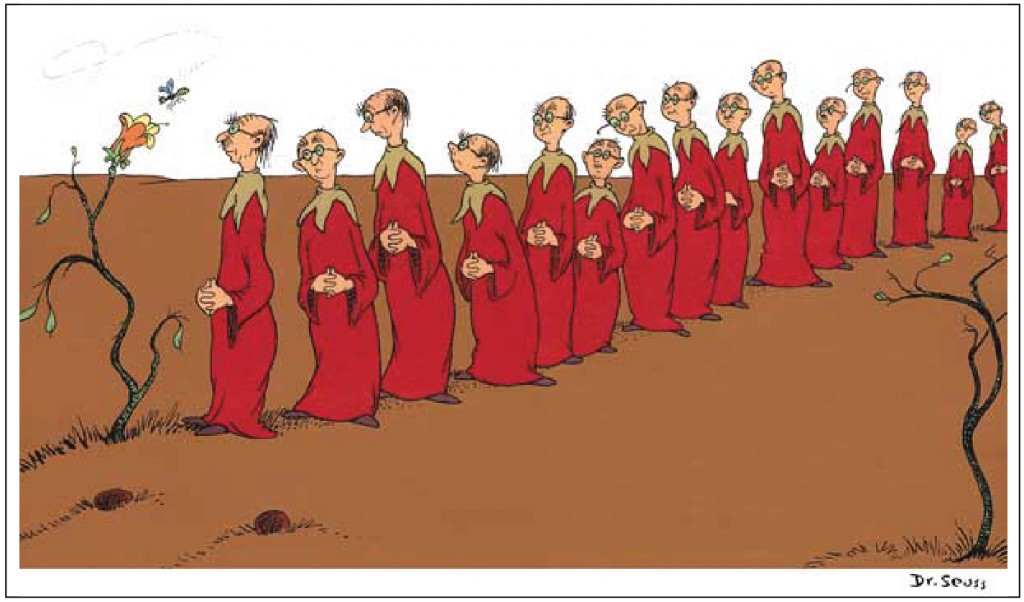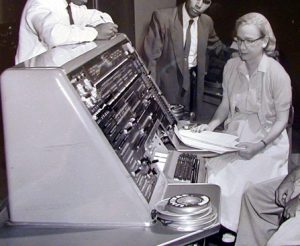
10 Mar The “Other 499/500ths” of Human History
We long for the “other” 499/500ths of human history… We don’t need – or even want – managers. Instead, we thirst for leadership!
In this vein, an old saying comes to mind, “You lead people, you manage things…”
The earliest reference I found to this quote attributed it to Admiral Grace Hopper. I wouldn’t be surprised if you haven’t heard of her by name – but you know “of her” sayings for sure. Another of her sayings is this: “It’s better to beg for forgiveness than to ask for permission.”For me, those are words I choose to live by!
(See More About Grace Hopper Below)
Anyway, the notion of employer/employee, boss/employee – “managers and management” – is a vestige of the industrial age that started in England during the late 1700s. That’s the period of human history when we needed people to be able to operate machinery – we didn’t need them to think, after all, the machine was the MOST important thing. As time progressed, we began to see people simply as “extensions” of the machine; as nothing more than interchangeable parts (e.g., one person could do the same thing as another and the role of the individual disappeared).
We dehumanized our workforce.
Furthermore, the industrial age marked the beginning of “performance management” — the notion that in order to ensure acceptable performance out of somebody they needed to be watched closely. In other words, the pervasive thinking of the industrial age was this: people were not to be trusted, or were simply not able (or both), to find the internal motivation for a job well done. We HAD to supervise them closely or they’d stop performing.
Now, some would say the industrial age ended when the technology revolution began in the early 1900s – however, MUCH of our management-related theory is still stuck in the early 20th century. As such, we’re STILL dehumanizing our workers by using anachronistic, industrial age approaches. And, if we look at the totality of human history (maybe 100,000 years?), and look at the fraction of time that includes the industrial age, we see the world of manager and management represents less than 1/500th of the total (that’s a rounding error!).

The idea of “manager and management” reminds me of a Dr. Seuss book: Did I Ever Tell You How Lucky You Are? It’s a book about the jobs you don’t want to have… Anyway, in the book there’s the town of “Hawtch Hawtch,” and the town bee just isn’t producing. So, the town leaders decide the bee needs someone to watch it carefully, so they hire somebody to stare at the bee. This person stares at the bee intently and still the bee doesn’t get any better performance.
The leaders say, “It must be that the watcher’s not watching closely enough.” Here’s their resulting bright idea – they hire somebody to watch the watcher. Seriously. The new watcher stares at the other watcher’s back while that watcher is staring at the bee. Guess what? The bee still doesn’t produce any better. As the story progresses, the industrial age way of thinking is never disrupted, and we see a REALLY long line of people standing (maybe miles long), each watching the watcher in front of them. Guess what? The bee STILL doesn’t produce any better.
Dr. Seuss’ lesson is simple, yet profound: watching – even VERY closely – doesn’t work. What about you? Have you ever been micromanaged? Did you perform any better as a result?
It turns out the “leaders” in Hawtch Hawtch had it completely backwards – as do MANY organizations out there today. The bee didn’t need a manager – the bee could do the work all by itself. However, to get the best from the bee, the bee needed a leader. The bee needed to be inspired. The bee needed some reason to perform better.
What’s a better answer to encourage better performance?
How about we look at the other 499/500ths of human history? For this time period, we used the apprentice, journey person, mastery model. Each of us started as a beginner — we had a beginner’s mind, we didn’t know exactly what we were doing. As time progressed, we learned from someone (an elder, a master) who encouraged and taught us along the way as we acquired mid-level skills and capabilities – we became “journey persons.” Eventually, through enough learning on our own, and teaching others along the way, we became the master, the sensei, the teacher. We become the elder that imparted the wisdom onto the next generation moving forward. This is the way it’s worked in the other 499/500ths.
So, why aren’t we doing it that way now?
We’re stuck in the past. Too many “leaders” believe that performance management systems actually work. In other words, if we put goals into a person’s performance plan it will somehow change their behavior to bring out their best. Instead, it causes us to do just the minimum in order to reach whatever sort of incentive that we’ve set up for them. It doesn’t bring out our “A game.” It doesn’t bring out our best. It’s not inspiring to us.
Fortunately, all is not lost – and some organizations are starting to do things differently.
In fact, there’s a study from January 2016 from the Association for Talent Development (ATD) that indicates the following: “Only 8 percent of companies report that their performance management process drives high levels of value, while 58 percent said it is not an effective use of time.” (See the Complete Article Here). Many organizations – including some very large organizations (Accenture, chief among them) – are doing away with performance management systems altogether.
It’s time for us to get on board with this idea – forcing people’s performance to fit on a bell-shaped curve is VERY industrial age thinking – why can’t ALL people have the potential of becoming star contributors? People are fully capable of making good decisions. People can choose one option versus another. People can learn and apply the stuff that they are getting from somebody else if it’s given to them in a way that it speaks to their strengths. It captures their imagination. It gives them a path forward as opposed to, “Here’s your performance plan. This is what you need to do and if you don’t do this we’re going to punish you.”
My questions for you are these: “Do you want the best out of your team? Do you want the people around you to bring their A game, to be fully engaged in the work that they’re doing? Yes? Really?”
Here are a few hints on how to do just that:
1. STOP MANAGING:
It’s time to come to grips with the fact that management — and managers — really aren’t that effective. No one, in their heart of hearts, really wants (or needs) a manager. So — stop it. Quit watching closely and start inspiring. Give your team a reason to give their best. It requires a certain level of maturity and enlightenment to do this — it’s about trusting ourselves as leaders enough to be able to trust the process of leadership.
2. ENGAGE ONE-ON-ONE:
Managers LOVE to sit behind spreadsheets, KPIs, balanced scorecards and performance dashboards. Why? Because it’s clinical — it’s safe, clean, and sanitary. However, REAL people don’t exist in numbers, or data, or reports — they exist as living, breathing, feeling, thinking creatures. Further, we are SOCIAL creatures — meaning we have a basic, core human need for connection. Yes, even the “clean, clinical” manager needs connection — so get out there and mix it up!
3. ENCOURAGE CURIOSITY AND DISCOVERY:
Here’s maybe the hardest thing to do of all — leaders ACTIVELY encourage their team members to think differently, to examine new ideas regularly, to question the status quo. If you truly want a fully-engaged, high-performing team, then you need to let them FLY! Really. Reward curiosity, recognize risk-taking, encourage discovery, allow failure, and leverage team member strengths. Sounds like a pretty great place to work, doesn’t it?
Yes, all of this means whatever you’re thinking about will likely take more time up front. It’s also likely to be far more messy that just “watching” carefully. Why? Because people are messy. People are challenging. People have emotions. However, it’s how we get the best out of the people around us.
Stop managing, start leading. Today.
For more information about how to ENSURE change will fail, read my blog on the “Top 10 Ways to Ensure Epic Organizational Change Failures.”
Admiral Grace Hopper
I think Grace Hopper was the first female admiral in the Navy, and she’s one of my personal heroes – particularly related to my previous life in information technology. She’s credited with creating COBOL (a very popular business-related programming language).
She also is credited with coming up with the term “computer bug.” At one point, the computer they were working on failed, and the investigation that ensued discovered that a moth had gotten stuck in a switch. They took out the moth, and voila – they’d “debugged” the computer!
Most notably about Admiral Hopper to me, however, is the fact that my grandfather was a team member of hers back in the mid-40s when the Navy built the first digital computer used in the Department of Defense (the Mark 1). She was a programmer and he was an electrical engineer. I got to meet her back in the 80s and talk with her about my grandfather. She remembered him fondly. (For another “Grace Hopperism,” watch as she gives David Letterman a “nanosecond” as part of the Late Show.)




No Comments